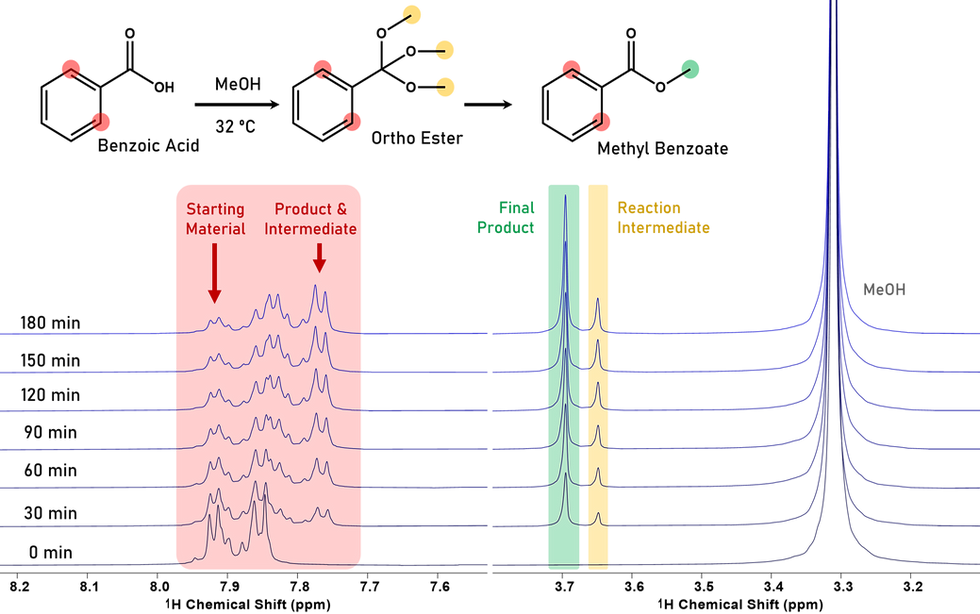A Diels-Alder reaction with 125 MHz benchtop NMR
- John Price

- Nov 5, 2021
- 2 min read
Updated: Jun 28
The Q Magnetics 125 MHz benchtop NMR spectrometer is a powerful and convenient tool for monitoring chemical reactions. No reconfiguration is required to periodically transfer samples by flow from an external reaction vessel, or to track reactions carried out directly in the polymer sample tube. In this post, we demonstrate monitoring of a Diels-Alder reaction. This particular reaction has recently been studied as a route to producing phthalic anhydride from lignocellulosic biomass, a promising renewable feedstock [1].

125 MHz NMR reaction monitoring in non-deuterated DMSO
An equimolar solution of cyclohexadiene and maleic anhydride was prepared in non-deuterated DMSO, then immediately injected by syringe into the spectrometer’s sample tube. Spectra were recorded every 5 minutes for 3 hours. No shimming or other spectrometer adjustments were made after the sample was injected, or during the 3-hour period. No solvent-suppression techniques were used or needed. The figure above shows integrations of the vinylic proton signals from the reactants and the adduct product plotted versus time. These signals are sufficient to track the progress of the reaction and quantitatively characterize the second-order kinetics. All other expected signals are also present (DMSO and its satellites at 3.09, 2.54, 1.98; cyclohexadiene at 2.09; adduct at 3.29, 3.03, 1.12-1.68).
When the spectrometer’s polymer sample tube is filled using the front-panel fittings, there is no change of the sample geometry. This means there is normally no need for shimming before starting scans, as would be required with a spectrometer that uses NMR tubes. Data collection can start immediately after a sample is injected or immediately after it is transferred by flow from an external vessel. No special insert is required for sample delivery by flow. If a precipitation accident occurs and the sample tube becomes blocked, it can be quickly replaced without disturbing the magnet, and experiments can resume within a few minutes.
References
1. Eyas Mahmoud, Donald A. Watson and Raul F. Lobo, Green Chem. 16, 167 (2014).








Comments